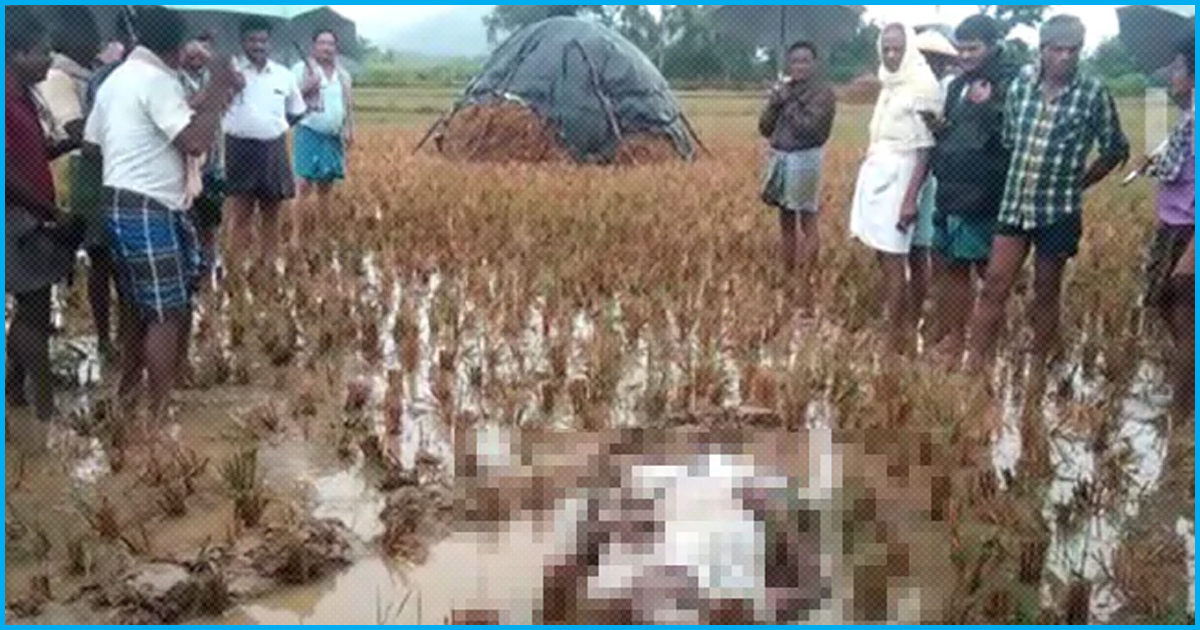An ocean of humanity originating from Nashik flooded the streets of Mumbai on March 6 this year, with nearly 40,000 landless peasants and farmers marching to get national attention to the agrarian crisis that has been tormenting them for years. Farmers who could not afford shoes walked barefoot under the scorching sun. All the farmers walked towards Azad Maidan, a venue in South Mumbai where political protests are held.
The reason for the growing farmer crisis in India is not restricted to a single cause. For instance, Cyclone Phethai, besides causing extensive damage to several areas, also took the life of a farmer who could not survive the damage caused to his crops by the storm.
Farmer died in shock of losing his crops
Lashing several parts of Andhra Pradesh and Odisha, Cyclone Phethai with squally winds and heavy rainfall caused damage through coastal Andhra Pradesh. Normal life was disrupted due to inclement weather. Even as houses that were damaged by Cyclone Titli in October have not yet been fully repaired, as many as 11,600 people had to be evacuated from Gajapati district.
Amidst all the chaos, Gottipally Chinnarao, a farmer in Andhra Pradesh, collapsed and died of a heart attack on his field, unable to bear the damage Phethai had caused to his paddy crop, reported NDTV.
The farmer had gone to the field to break the bunds, tackle waterlogging and save the harvest that was ready to be sold. At the sight of his damaged crops, he collapsed and died.
“My father suffered losses in the earlier cyclone too. The harvest was bundled and ready but got completely wet. He tried to save the crop but collapsed and died,” said his son Kameswar. On 60,000 acres, standing crops’ damage was worth Rs 243 crore. In Srikakulam, coconut, jackfruit and banana plantation were devastated by Cyclone Titli just two months back.
As per the experts, farmers need robust insurance and funds to cope up with such crises.
Andhra Pradesh farmer and his family take to begging
An Andhra Pradesh farmer and his family began begging on the streets to get back their land from their relatives. According to the farmer, he was collecting money in order to bribe a local revenue official, allegedly withholding his land’s ownership papers.
“Please donate so that I can pay the bribe. If you pay up, you can get any work done. I can’t, so I lost my land. In the last two years, I have been struggling,” said 35-year-old Raju.
A banner in Telugu put up by the family read that to get their land back, the family has gone on a hunger strike and that they had no money to offer to the revenue official. It also read that they were worried about their safety as the officials might get upset by the protest, NDTV reported.
Raju claimed that his relatives have grabbed 25 acres of his land in West Godavari district’s Madhavaram village. Allegedly, a revenue official who had previously been posted there was bribed by the relatives. Raju was frustrated by the corruption and he decided to carry out this unique protest so that he too can “bribe” the official and get his land back.
The Mumbai March
Without taking any rest from their exhausting journey, the farmers walked to Azad Maidan after midnight. They were offered food and water by middle-class workers. Against the evident indifference of the elites and the government of India to the growing rural distress, these acts of solidarity stood out in relief.
Agrarian distress driven by the policy is very real. India’s national census is conducted every decade and 2011 recorded that compared to 1991, there were almost 15 million fewer farmers, reported The New York Times. Over the years, many of these farmers became landless agricultural labourers and some moved into the agrarian underclass ranks.
While cultivation costs have been rising steadily, the incomes of the farmers have been declining as seeds, fertilizers and pesticides are in the hands of corporations. Agricultural credit from the public-sector banks steadily increasing has benefitted agribusiness and not farmers. According to the National Crime Records Bureau, there has been 3,00,000 farmers suicides between 1995 and 2015.
The farmers had marched for a very valid reason. Their demand was minimum support prices for their produce at governments’ long-promised levels. Repeated collapses have taken place in prices that farmers received. While there has naturally been a dependence on the monsoons, vulnerability to a rigged market has joined. A severe water crisis has also been the reason behind extensive agricultural damage.
With so many deaths and suicides, with such a lot of distress and despair around, it is high time that the government does its best to give relief to the farmers.
Also Read: Maharashtra Farmer Protests, Dumps 13 Quintal Onions After He Was Offered 5 Paise Per Kg










